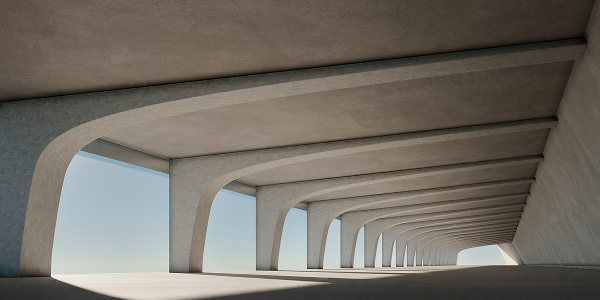Buildings, roads, bridges… These structures, which we pass by every day and are embedded in our daily lives, are mostly made of concrete. But we usually only see its visible surface. In reality, concrete exists with all its strength underground and underwater.
Let me explain the point I want to emphasize in this introduction with an example. Take the 1915 Çanakkale Bridge, a project we were involved in. The caisson foundations supporting the bridge piers stand silently in the depths of the sea. When we consider the strong currents of the strait and the heavy maritime traffic, we are reminded that concrete needs not only to be “strong” but also “durable.” In other words, we must talk not only about concrete’s initial strength, but also about its long-term resistance to environmental conditions.
Why Does Concrete Deteriorate Over Time?
Because the external world never stops. Rain, wind, freeze-thaw cycles, acidic gases, groundwater, chemicals, carbon dioxide… all seek a way to penetrate the concrete. If the concrete has not been properly produced, these elements find pores, seep in, cause cracking, and weaken the structure. Eventually, we are faced with a structure that has lost its load-bearing capacity.
How Do We Keep Concrete Strong?
It’s important to emphasize that durable concrete must have a homogeneous and impermeable structure. There are several fundamental principles to ensure durability during production:
- A low water/cement ratio
- Selection of high-quality and appropriate materials
- And a step that is often overlooked: curing
Why Is Curing Important?
After concrete is poured, the cement particles inside need to undergo a chemical reaction with water molecules in order to harden. This process is called hydration. For hydration to proceed effectively, the concrete must remain moist for a certain period. Keeping concrete moist during this time is called curing.
If this process is not managed properly:
- The concrete rapidly loses moisture from the surface,
- Cracks begin to form at an early age,
- A porous and brittle structure develops,
- And the concrete becomes vulnerable to environmental effects.
All of these factors reduce the concrete’s load-bearing capacity and significantly shorten the service life of the structure.
What Do the Experts Say?
One of the most prominent names in concrete technology in Turkey, Prof. Dr. Turhan Erdoğan, highlights the critical importance of the trio: correct proportioning, proper materials, and effective curing for durable concrete.
Internationally renowned experts such as A.M. Neville and P. Kumar Mehta also emphasize that curing, especially during the first 7 days, directly affects the service life of concrete.
For structures to be long-lasting and safe, it is not enough for concrete to be well-produced; it must also be applied using proper techniques and, most importantly, the curing process must be carried out with care. Durable concrete is not only the result of carefully selected materials, but also of a carefully managed application process. The work doesn’t end when the concrete is poured—on the contrary, that’s when the real process begins.
To sum up, as our esteemed professor Prof. Dr. Mehmet Ali Taşdemir once said:
“Ready-mixed concrete is not ready.”
The strength—or weakness—of concrete depends entirely on how you care for it.






